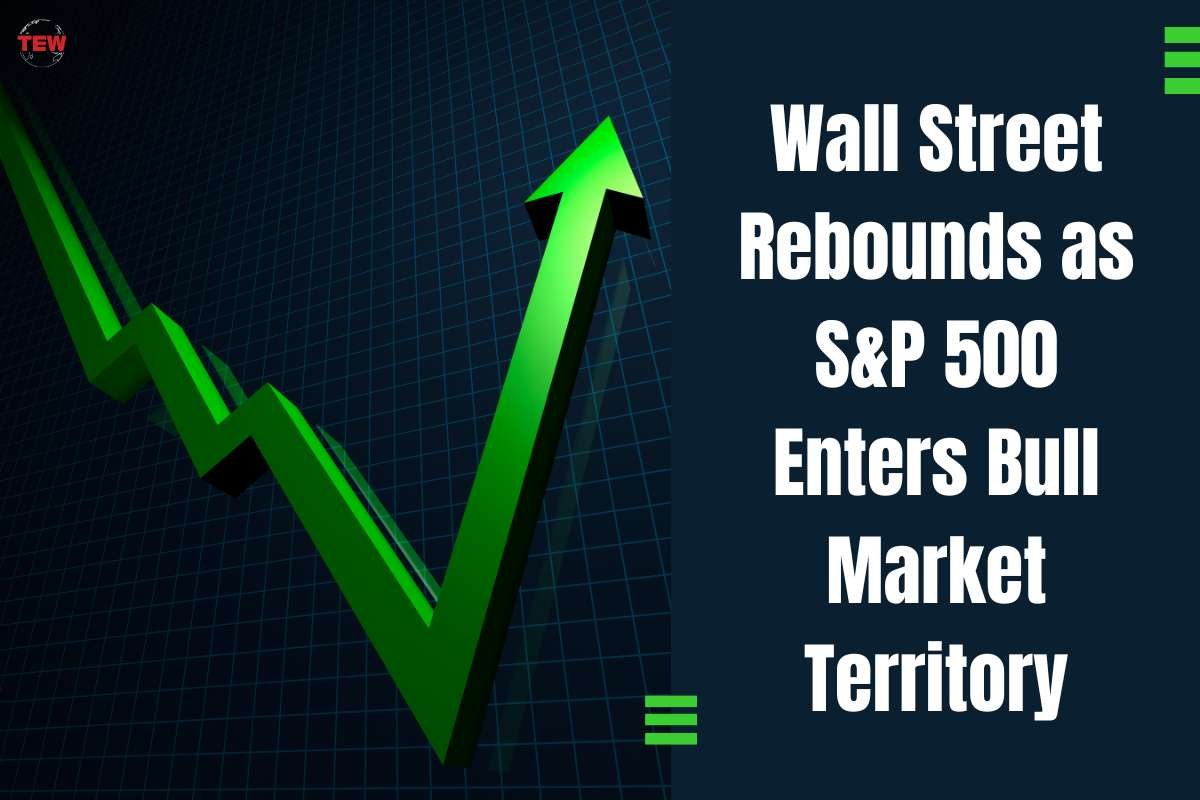After months of uncertainty and market volatility, Wall Street is experiencing a resurgence of optimism as the S&P 500 closed Thursday in a bull market. The index recorded a remarkable 20% surge since its recent low on October 12, 2022, effectively bringing an end to the bear market that began in January 2022.
Role of Major Tech Stocks
The strong performance of major technology stocks played a significant role in the rally, propelling the broad-based index to a closing value of 4,293.93. This milestone marks a transition from a bear market, characterized by declining stock prices and pessimism, to a bull market, signifying a period of rising stock prices and investor confidence. Market sentiment has reached a peak, with CNN’s Fear and Greed Index registering “Extreme Greed” on Thursday.
On Wall Street, big jumps for several big tech stocks helped lift the market ahead of their earnings reports, which came after trading closed for the day. Amazon and Google’s parent company, Alphabet, both jumped more than 7%, while Apple rose 3.7%.
The revival of the tech industry, particularly in the field of artificial intelligence (AI), has sparked investor interest in tech stocks that dominate the S&P 500. After enduring a challenging year, major players such as Google, Meta, Apple, Amazon, and Nvidia have regained their footing, fueling hopes of a new tech revolution driven by AI. This resurgence in the tech sector has contributed to the recent market momentum.
Contribution of Other Factors
Several factors have contributed to the market’s upward trajectory over the past week. The resolution of the debt ceiling crisis, growing optimism that the Federal Reserve will pause rate hikes during its June meeting, and positive economic indicators have all played a role in boosting investor confidence.
However, analysts remain cautious amid concerns that the current rally may be short-lived. Inflation levels continue to hover at uncomfortably high levels, and while the US economy continues to add jobs, the pace of job growth has slowed. Consumers are tightening their spending on discretionary items and prioritizing essential expenses like food and leisure activities.
“We’re very late in the economic cycle that’s starting to slow and probably heading for a recession later this year,” warned Sameer Samana, senior global market strategist for Wells Fargo Investment Institute. He highlighted that bull markets typically align with economic expansions, not contractions.
What Are The Experts Saying?
Market experts emphasize the need for investors to exercise caution during this period. Kevin Gordon, senior investment strategist at Schwab, describes the current situation as a “duck market.” While stocks appear calm on the surface, there is significant turbulence beneath the waterline. The concentration of mega-cap tech and AI companies in the market has created a divergence, with smaller and cyclical companies struggling to keep up.
Lisa Shalett, chief investment officer at Morgan Stanley Wealth Management, stressed the risks of narrowness and concentration in the market, stating, “Such narrowness is not what new bull markets are built on.” Inflation, meanwhile, has eased off since hitting a peak last summer. That has Wall Street hoping for the Fed to soon stop hiking interest rates.
Despite the excitement surrounding the recent rally, Samana advises investors to maintain perspective and view it as a bear market rally rather than a new bull market. He recommends investors take advantage of the market swing by trimming their portfolios and shedding underperforming assets instead of chasing the tech companies that have led the recent surge.
Future of the Bull Market
Looking ahead, the fate of the bull market may hinge on the Federal Reserve’s upcoming interest rate policy decision. Sam Stovall, chief investment strategist at CFRA, suggests that if the Fed decides to skip rate hikes or end its rate-hiking program, historical trends indicate further upside potential for the market.
As Wall Street finds itself in uncharted territory, it remains to be seen whether this current rally will pave the way for a sustained bull market or if cautionary signals will prevail. Investors must closely monitor economic indicators and the Federal Reserve’s actions to navigate the ever-changing market landscape effectively.





